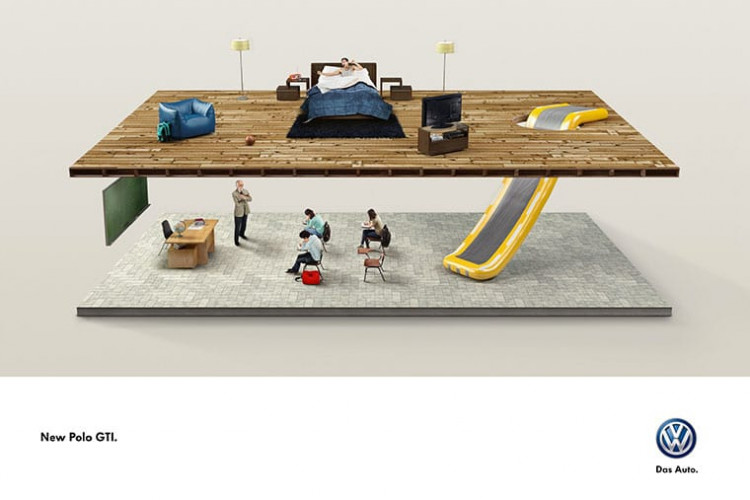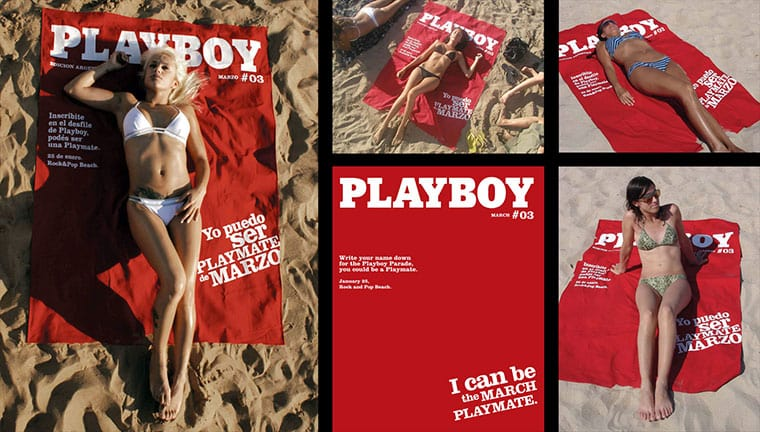No matter where you live, work or go on vacation – almost all the advertising around you is worthless. But why? Good advertising scares people, especially customers. After all, they spend a huge amount of money on it, which they risk losing if the idea or message doesn't work. Most agencies are afraid of losing their customers, so advertising often turns into a simple and safe copycat, while creativity takes a back seat. In this article, you will learn how to generate unusual ideas and make advertising catchy.
What and to Who?
Before you start creating ads, you should decide what you want to say and who you are addressing to. Simply put, determine your message and target audience. Remember, you only have a few seconds to get your message across, so it's important to focus on a single benefit. Attempting to say everything at once will weaken the advertising message.
As soon as you have decided what you want to say, you need to consider who the message is addressed to. In fact, choosing your target audience largely determines what and how you will say in your ads. Define the audience along the following parameters:
- Age
- Income
- Education
- Marital Status
- Occupation
- Behavior, preferences
- Hobbies
It's best if the target audience isn't too general – focus on its average representative. Put yourself in their place, find out why, when, where and how often they use what you're advertising, and if they haven’t used it yet, or have stopped using it – figure out the reason. The ability to understand people is the core of any good advertisement.
Image
Creative advertising creates an image that plays with our imagination. Think of well-known means of artistic expression from the school course of literature – tropes: hyperbole, litotes, simile and metonymy. You can come up with creative ads by combining them.
Hyperbole
This is a technique of creating an image by means of artistic exaggeration.
Litotes
It’s the opposite of hyperbole – artistic understatement.
Comparison
An image is created by comparing the properties of one object with another.
Metonymy
It plays on a feature of the object, or another object that is related to it.
Advertising Techniques
Associations
Make the recipient associate themselves with the advertisement and its character. Show them the world they live in, and what is not yet available to them without your product. For example, as in this Nike commercial:
Let the viewer imagine themselves in your character's shoes and make them think of the product being a component of success.
Method of Focal Object
Attach attributes of random objects to the product you are advertising. You will come up with many unusual combinations – try to develop them with free associations.
Action Plan:
- Determine the object you will advertise (the focal object)
- Choose three to five random objects in a haphazard manner
- Identify the special and characteristic properties of these random objects
- Combine the focal object and the special properties of the random objects – you will get unusual combinations
- Develop these combinations
For example, you are advertising a laptop. Open any book and select random words on random pages. I got dragon, dwarf, and campfire from The Hobbit, or There and Back Again. Now let's define characteristic properties.
Dragon:
- Large
- Scary
- Malevolent
- Powerful
- Fire-breathing
- Flying
- Greedy
Dwarf
- Short
- Thickset
- Strong
- Hardy
- Bearded
- Tight community bonds
- Xenophobia
Campfire
- Hot
- Bright
- Dangerous
- Suitable for cooking
- Weapon
- Heat
Let's try to describe the laptop using these properties.
Laptop + Dragon: It's obvious that our laptop is as powerful as the dragon, having a large screen diagonal. Scary and malevolent don't fit for the advertisement. Fire-breathing – the dragon's flames destroy everything in their path, every obstacle, – just like our laptop effortlessly handles any task. Flying means fast. Greedy as a tendency to gain material wealth, I would transform it into the perfect device for work, which will help the user earn money anywhere.
Laptop + Dwarf: Despite the large diagonal of the screen, the laptop body itself is quite compact. Its strength has been described through the dragon. Hardy means that the laptop has a long battery life – 10-12 hours. Bearded – I would say it’s beautiful, but this is a matter of taste, of course. Tight community bonds – well developed ecosystem and interaction with other devices of the same brand; xenophobia – no USB-C connector.
Laptop + Campfire: Hot, warm, dangerous – I would combine these properties and play on the opposite, suggesting that our laptop doesn’t overheat and has a good cooling system. Bright means a good display with high resolution – 2K, for example. Suitable for cooking – I would again consider the laptop as a tool for work and getting money to feed the family. Weapon – a tool for work.
Synectics
It’s a technique aimed at finding analogies between objects. Analogies can be various: material, symbolic, graphic, verbal, explicit, implicit and based on shape, structure, functions, etc.
People are used to constantly making connections between words, thoughts, feelings and objects. The consciousness most often reproduces previously experienced moments. Analogy is a good trigger of these emotions, which in turn stimulate creativity. The most famous examples of analogies are:
Explicit Analogy
The idea is to find similar solutions to problems, business ideas, common processes in other areas of knowledge and then adapt them to your needs.
Personal Analogy
It makes you to imagine yourself in the role of the advertised object, so you can speculate about "your" feelings and decisions of advertising communication.
Fantastic Analogy
Build your advertisement using fantastical images or situations. The imaginative use of fantastical means often helps to uncover false or unnecessary limitations of a product.
The key point of synthetics is to reject obvious solutions. Identify the main difficulties that hinder your product and find ideas using analogies.
How do you generate more ideas?
You can work on an advertisement alone or in a creative team. Both methods have pros and cons. On the one hand, when you work alone, all the ideas belong to you only, so you don’t have to share the glory with anyone. On the other hand, a problem shared is a problem halved. But there are disadvantages of group work as well. Usually, most creative ideas are generated during brainstorms, that might be not quite effective sometimes.
Most often, techniques for generating brilliant ideas, especially personal ones, are made up of several ways of creative thinking and personal qualities of the creator – their character, temperament and worldview. To combine all of these factors within a single creative group, use three idea generation techniques that we find most effective.
Range of Creativity
Generate new ideas within the frames. First, determine the least risky and most conservative idea for your advertisement. This is your Safe Option. Then, figure out the most extreme and crazy idea – this is your Insane Option.
By limiting yourself to the Safe and Insane options, you relieve yourself of the psychological burden. You are no longer looking for an abstract Great Idea, but only the options that fit within your predetermined creative range.
Graphically, this method looks like this:
The straight line between the Safe and Insane options is the entire creative range. Use this method, give up critical and evaluative thinking – your task is not to filter out ideas, but to line them up on the risk scale.
Ship Crew Meeting
It is a type of brainstorming, but its main difference is the strict sequence of expressing opinions. The main goal is to maximize the experience, knowledge and imagination of all the participants. According to the rules of the Ship Crew Meeting, all members of the team should speak on a task or problem, so there is no way to keep silent.
The Captain, represented by the leader, establishes in advance the order and sequence of speeches from the Cabin Boy to the Captain, i.e. starting with the junior staff member to the senior one. Only the Captain shall ask questions, and the participants of the meeting may suggest, criticize and defend ideas only on command. The diagram is the following:
The success of this method depends on the leader's ability to create a creative environment in the team, which allows employees to be active in seeking a solution to the problem. The Ship Crew Meeting works most effectively under time pressure.
Brainwriting
This is the technique that we use regularly. The idea is simple – all participants take a piece of paper and take 5-10 minutes to come up with and write down all the ideas for solving the problem that come to mind. Then they switch their sheets and start to either develop the ideas of other participants or use them as a basis for new ones, and repeat this process six times in a row.
As a result, you end up with a solid set of ideas, and then the best ones are selected by voting. Our creative group generated the following ideas:
Certainly, all creative methods and techniques have one disadvantage – they explain the path that the creator has to follow, but they are not able to help him or her pass through it. I hope this article has brought you at least a little closer to understanding and solving your advertising problems and challenges.
Share on social media:
































